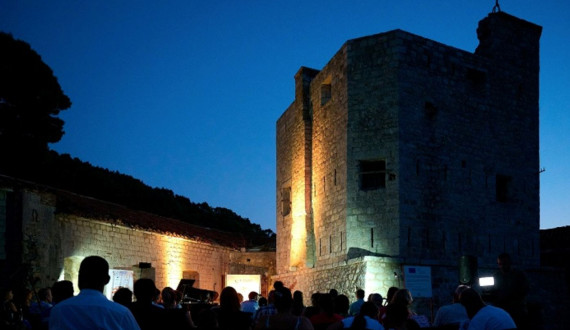CONTEMPORARY FORTRESSES OF CULTURE: BOKA, TREBINJE, NOVI SAD PANEL DISCUSSION HELD AT THE TROJICA FORTRESS
The fourth evening of the project titled CONTEMPORARY FORTRESSES OF CULTURE: BOKA, TREBINJE, NOVI SAD, a panel discussion and a music program, was held last night in front of the Trojica Fortress as part of the KotorArt Philosophers’ Square.

During the panel discussion, there was talk about fortification heritage, Montenegrin circumstances and treatment of this heritage, legal regulations and the potential that these former military fortifications could have.
The panelists were Dobrila Vlahović (Ministry of Culture and Media) and architect-conservator Aleksandra Kapetanović, while the moderator was Violeta Đerković.
Dobrila Vlahović reminded that the fortifications represent one of the exceptional segments of the Montenegrin cultural heritage, which has not been sufficiently explored, and which has great resources and potential.
“Montenegro’s cultural heritage has fortifications protected by law, and the largest number of them is located in Boka Kotorska. The fortification system of Boka Kotorska has been insufficiently explored, and Professor Ilija Lalošević, PhD has made a significant contribution to the research. From a professional perspective, he has published numerous scientific papers and a book on the subject, which is a significant potential for future research. In the past, the Ministry of Culture contributed, and still contributes, to the valorization and presentation of cultural heritage, but it is not the only one.
From the legislative aspect, the Ministry has contributed to the drafting of the Law on the Protection of Cultural Property. When it comes to the area of Kotor, there is the Law on the Protection of the Town’s Natural Area, which more closely defined the management and protection mechanisms. The implementation of those laws depends on numerous entities in the system of cultural heritage protection”, says Vlahović.
Architect and conservator Aleksandra Kapetanović explains that the concept of cultural heritage has developed especially in recent decades.
“From the beginning, when we understood cultural heritage only as objects, since the 70s of the last century, that concept has been slowly expanding, so, in addition to objects, today it includes rural and urban entities, as well as entire landscapes. In the 1990s, through the UNESCO Convention on the Protection of World Natural and Cultural Heritage Sites, the concept of cultural landscape was introduced, which represents the joint action of nature and man. As representatives of the profession, in recent years we have been trying to point out that the most valuable segment of our cultural heritage is precisely the cultural landscape. The value of this space includes different layers, some of which are more and some less visible. For example, the Trojica Fortress has layers of medieval and Austro-Hungarian construction.
Most of the Austro-Hungarian fortresses were built on new locations. The results of the research show that there was a church before the fortification. The fortress is also part of a system that is not only made up of fortifications, but also roads, military quarters, wells”, Kapetanović said, among other things.
In the musical part of the evening, the audience had the opportunity to enjoy the performance of young Montenegrin musicians who study in Austria, sopranos Antonija Vučinović and Lorena Janković, and pianist Andrija Jovović.
The project is supported by the Western Balkans Fund.
